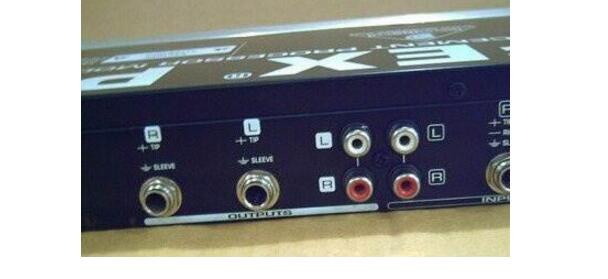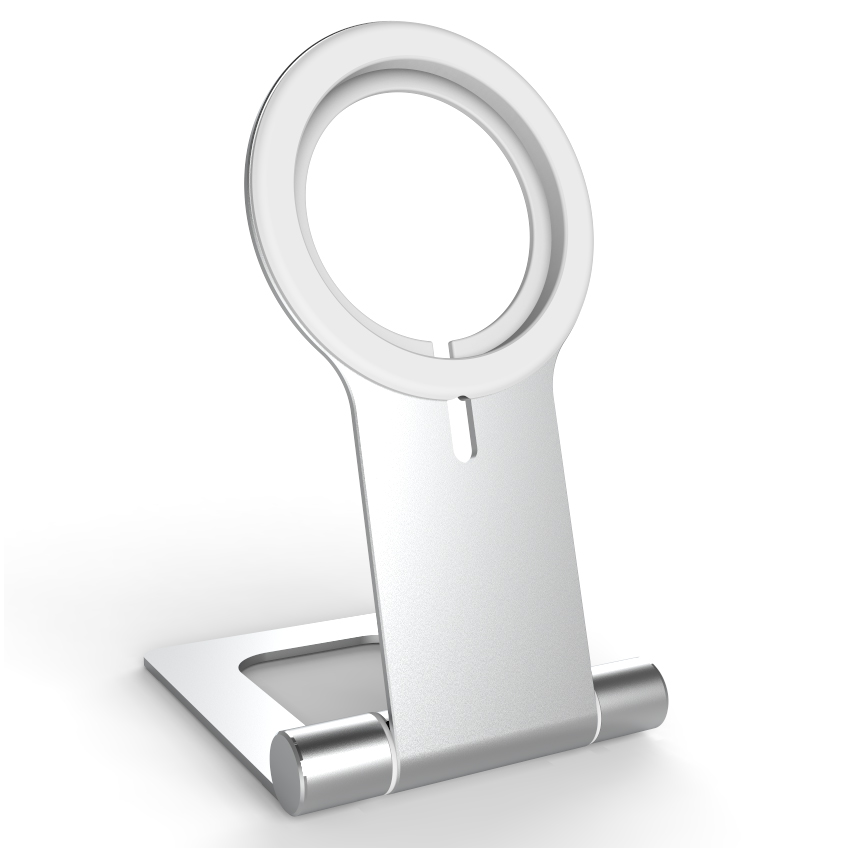Both exciter and equalizer are completely different.
1. The frequency of sound that the human ear can hear is generally 20Hz to 20KHz (Hz Hertz, unit of frequency).
2, all audio equipment, pickup, mixing, amplification, speaker sound will be due to equipment, materials and other effects, resulting in a sound signal in the transmission of some frequency attenuation or increase.
3, the equalizer can specify to increase or decrease the frequency of some need to be modified. It is often used to correct sound frequency curves that have been changed by objective conditions.
4, the exciter is to restore the loss of harmonic components of the audio signal, effectively expand the high-frequency bandwidth and improve the signal to noise ratio, thereby improving the clarity and expressiveness of the sound restoration. Of course, some people think that the exciter is actually creating a distortion, and the harmonic components brought by this distortion will sound very comfortable. If the benevolent sees the wise and sees the wisdom, generally it is MSG.

The basic principle of the exciter is to send the high-frequency band of the audio signal to the harmonic generator after selection and create the high-frequency harmonic of the frequency and add it to the original audio signal to strengthen the original audio signal. Harmonic components in the FM region to improve overtone structure.
The exciter is mainly composed of two parts: the direct channel of the audio signal and the excitation channel of the excitation channel. The working process of the exciter is as follows: the audio signal input to the exciter is sent to two channels, respectively, and a direct signal is obtained through the delay line. The direct signal is not subjected to harmonic processing, and the frequency characteristic of the audio input signal is retained; The other part of the audio signal is then subjected to a “harmonic excitation†circuit formed by an adjustable high-pass filter and a harmonic signal generator to generate a rich, adjustable harmonic signal (ie harmonic), which is then superimposed with the direct signal; The road superimposed signal is finally output by the signal mixing amplifier.
The tunable high-pass filter is used to filter out low-frequency components in the audio signal. At the corner frequency, it has a slope characteristic of about 12 dB/oct, and the corner frequency is adjustable so that it can be applied to certain frequencies within the frequency range of the processing signal. .
Actuator functionIncrease the loudness of the sound
Although the exciter only adds about 0.5dB of harmonics to the sound, it actually sounds like the volume increases by about 10dB. The apparent loudness of the sound increases, the stereoscopic image of the sound image, and the degree of separation of the sound increase.
For example, after the drum is energized, the drum's strength and loudness can be enhanced without adding extra power.
Increase the penetration of sound
The use of stimulators can improve the clarity, intelligibility and expressiveness of the sound, increase the penetrating power of the sound, and make the sound more instantaneous-quick. On the basis of increasing loudness, using stimulators can also effectively reduce hearing fatigue.
For example, when a singer sings softly, the sound is usually thin and the harmonic components are not rich enough. When the singer sings loudly, it will produce a rich harmonic wave, resulting in a lack of unity between the two. Using the exciter can make the harmonic components of the sound rich when playing lightly. The sound is beautiful and the sharpness is high; when the vocal is performed loudly, the output of the harmonic can be limited by the limiter inside the harmonic generator. The tone between them is unified.
Sometimes, when using the band live accompaniment, because the sound of the band accompaniment is too loud, the singer's voice will be masked, but reducing the accompaniment volume of the band will lack the proper atmosphere. Using stimulators to process the singer's voice can make the song stand out without reducing the band's name, improving the clarity and penetration of the sound, but the overall output level will not improve. No whistling will occur.
Increase the sense of space and three-dimensionality of the sound
The use of exciter increases the harmonics in the sound, and the exciter with low frequency expansion function can improve bass sound quality very well. The exciter significantly improves the frequency range, dynamic range, and loudness of the sound, improves sound localization and gradation, and increases spatial and three-dimensional sensation of the sound, thereby improving the sound quality of the playback sound.

Equalizer In a communication system, a component that corrects the amplitude and frequency characteristics and the phase-frequency characteristics of a transmission channel. The sine wave of frequency f is sent to the transmission channel. The characteristic that the ratio of the output voltage to the input voltage changes with f is called the amplitude-frequency characteristic. It is simply called the amplitude-frequency characteristic; the phase difference between the output voltage and the input voltage varies with f. Known as phase frequency characteristics, referred to as phase frequency characteristics. The signals transmitted by various transmission channels generally consist of some components of different frequencies. In the signal band range, if the amplitude frequency characteristic of 1 channel is a constant value; the characteristic of 2 phase φ changing with f is a straight line, which can be written as
¢(f)=2πft+θ, t is a constant; 3θ (referred to as phase cut) is equal to nπ, n=0,±2,±4,..., the signal waveform is not distorted by transmission. Condition 1 allows different frequency components to have the same output-to-input amplitude ratio after transmission, and conditions 2 and 3 cause them to have the same time delay. However, the actual channel often does not meet the above conditions, so the signal is distorted. If the distortion exceeds the allowable amount, the equalizer is used to correct the channel characteristics.
Balanced requirements are related to the nature of the signal. Since the human ear is insensitive to phase, when transmitting an analog telephone signal, only the amplitude-frequency characteristics of the channel are required. When transmitting a television signal, there are requirements on the amplitude and phase frequency characteristics of the channel, otherwise the picture is distorted. When the digital signal is transmitted in the baseband, the amplitude and phase frequency characteristics are required, because the waveform distortion will generate inter-symbol interference and increase the bit error rate. When the digital signal carrier is transmitted, the phase-frequency characteristic of the channel is not required to be intercepted. This is because the phase reference is not needed when receiving the digital frequency modulation signal, and the phase reference can be solved using the carrier recovery circuit when receiving the digital phase modulation signal. In this way, only the requirements of the amplitude-frequency characteristics and the delay-frequency characteristics of the carrier transmission are required.
The role of the equalizerThe first is to obtain a flat frequency response.
That is, within the human hearing threshold range (20Hz - 20KHz) in the sound field, the sound in each frequency band has neither peaks nor troughs. This requires dedicated test equipment to complete, attenuate the raised frequency band in the sound field, and increase the frequency of the trapped frequency band, resulting in a flat frequency response.
Second: It is the subjective feeling that adjusts the sound loudness.
Under normal circumstances, when the human ear is at a small volume, it tends to be more sensitive to the feeling of the intermediate frequency. We need to properly improve the low frequency and intermediate frequency to achieve a balanced subjective loudness.
The third is to suppress the whistle generated by microphone feedback.
The whistling is due to the formation of larger peaks in a certain frequency band, and the whistle can be suppressed after the frequency band is greatly attenuated.

Aluminum Cell Phone Stand, Durable Cellphone,Desk Cell Phone Stand Holder Aluminum Phone Dock Cradle,etc.
Shenzhen Chengrong Technology Co.ltd is a high-quality enterprise specializing in metal stamping and CNC production for 12 years. The company mainly aims at the R&D, production and sales of Notebook Laptop Stands and Mobile Phone Stands. From the mold design and processing to machining and product surface oxidation, spraying treatment etc ,integration can fully meet the various processing needs of customers. Have a complete and scientific quality management system, strength and product quality are recognized and trusted by the industry, to meet changing economic and social needs .

Aluminum Vell Phone Stand,Aluminum Cell Phone Desk Stand,Cell Phone Holder For Stand,Cell Phone Stands
Shenzhen ChengRong Technology Co.,Ltd. , https://www.laptopstandsupplier.com
